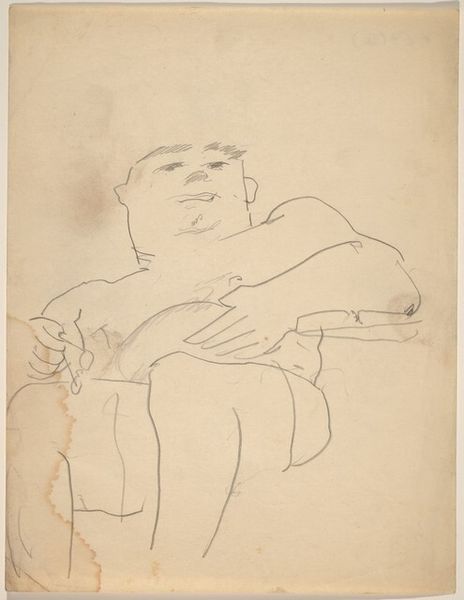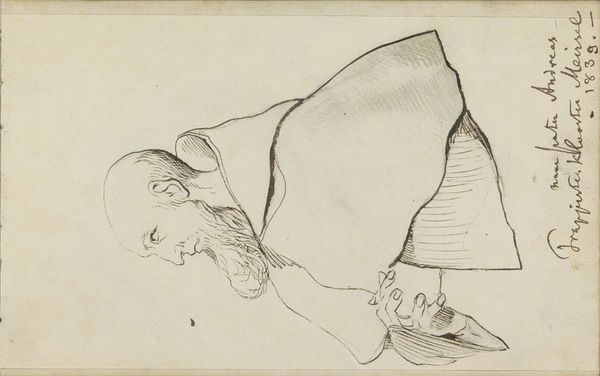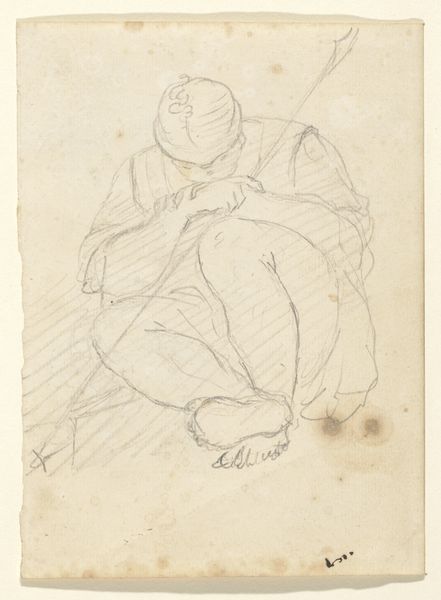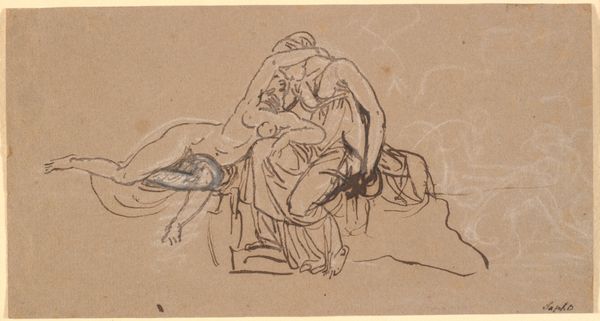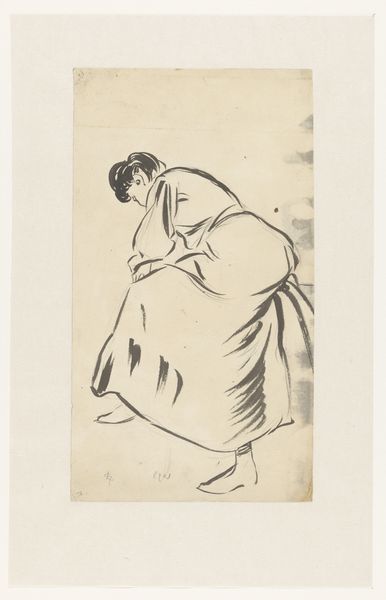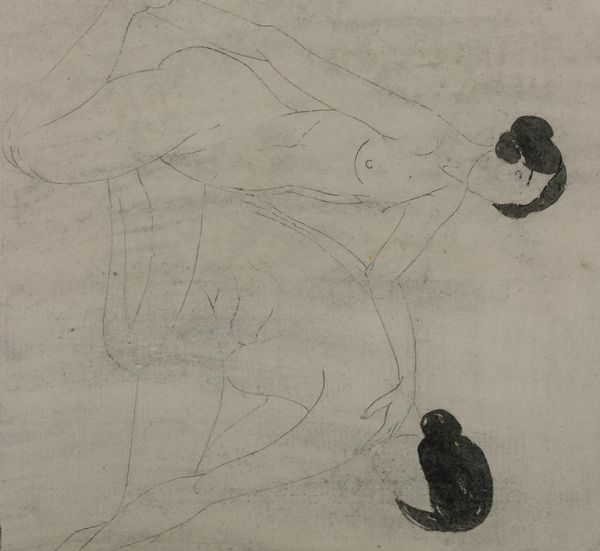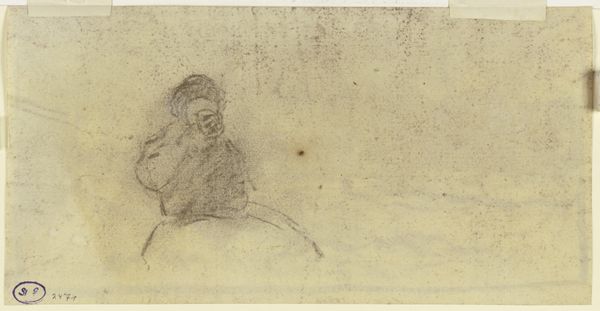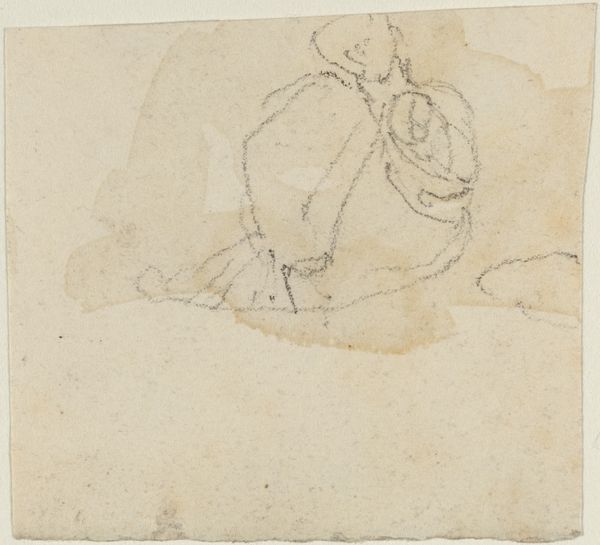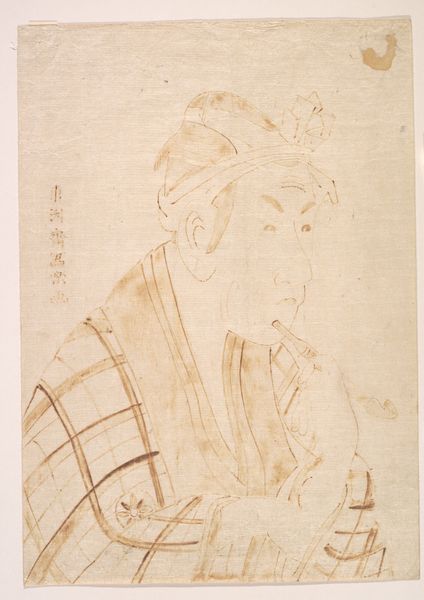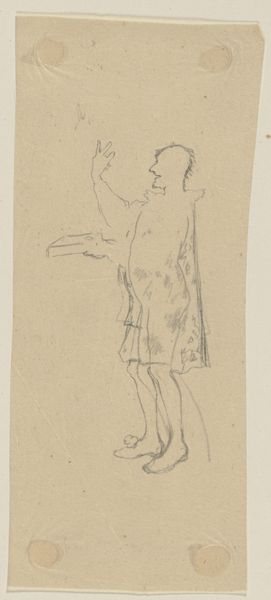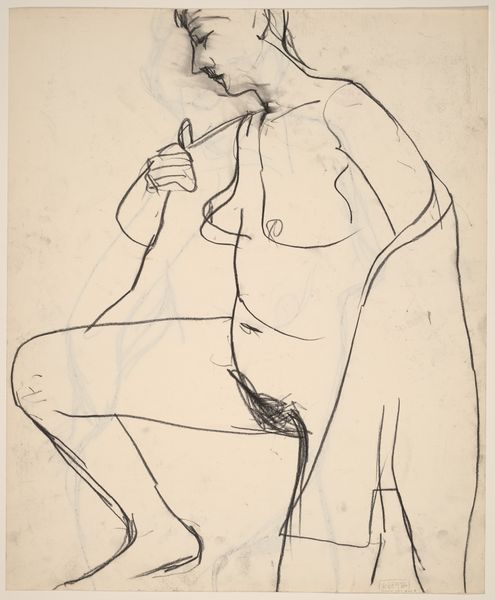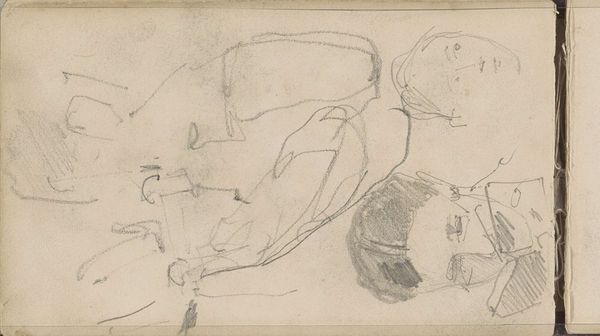![Seated Tahitian Woman (related to the painting Te faaturuma [Reverie]) by Paul Gauguin](/_next/image?url=https%3A%2F%2Fd2w8kbdekdi1gv.cloudfront.net%2FeyJidWNrZXQiOiAiYXJ0ZXJhLWltYWdlcy1idWNrZXQiLCAia2V5IjogImFydHdvcmtzL2QwYmNhMGQxLTM1NzUtNDkwZi05MWZjLTI2NzYwZjI3ZTFiYi9kMGJjYTBkMS0zNTc1LTQ5MGYtOTFmYy0yNjc2MGYyN2UxYmJfZnVsbC5qcGciLCAiZWRpdHMiOiB7InJlc2l6ZSI6IHsid2lkdGgiOiAxOTIwLCAiaGVpZ2h0IjogMTkyMCwgImZpdCI6ICJpbnNpZGUifX19&w=3840&q=75)
Seated Tahitian Woman (related to the painting Te faaturuma [Reverie]) 1891 - 1893
0:00
0:00
drawing, paper, pencil
#
portrait
#
drawing
#
indigenism
#
figuration
#
paper
#
pencil
#
post-impressionism
Dimensions: 555 × 480 mm
Copyright: Public Domain
Editor: Here we have Gauguin's "Seated Tahitian Woman," a pencil drawing on paper done between 1891 and 1893. It feels very simple, almost unfinished. What jumps out at you about it? Curator: Considering Gauguin's larger project, it's crucial to examine this work within the context of colonialism and artistic production. The very act of a European artist depicting a Tahitian woman raises questions of power, representation, and the exoticization of indigenous cultures. The 'rawness' you mention points to the processes that underpin the colonial gaze, which extracts labor and subjects to artistic or anthropological exploitation. How does this "unfinished" aesthetic play into this dynamic, especially given that it exists as a drawing rather than a full oil painting? Editor: So, you're suggesting that the medium itself, pencil on paper, contributes to a kind of visual shorthand, maybe even an economy of representation that mirrors colonial exploitation? The directness of the lines feels…invasive, now that you mention it. Is there any way to see past the colonial gaze that he perpetuates, given how much he participated in it? Curator: The social and economic forces always shaped art production. Acknowledging this does not absolve Gauguin, but we must consider what this work tells us about his methods, about the art market which prized these “primitive” images, and about the paper and pencils, and artistic labor he exploited from colonised peoples, making a portrait for a global market. In examining the object’s existence in terms of global consumption, we can consider both the image, and the context in which this image circulated, adding another dimension to the critique of colonial appropriation. The art materials used can therefore be understood as components within a larger network of exploitative labour, extraction and unequal cultural exchange. Editor: I'm starting to think differently about the 'simplicity' now, less as a matter of style, and more as part of a bigger system. Curator: Exactly. Hopefully, thinking about his materials offers a new perspective.
Comments
No comments
Be the first to comment and join the conversation on the ultimate creative platform.
